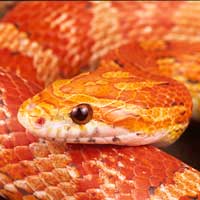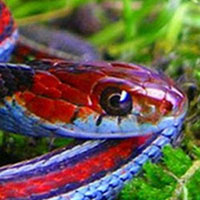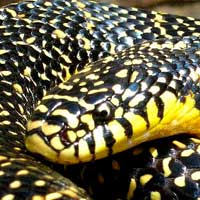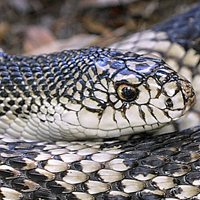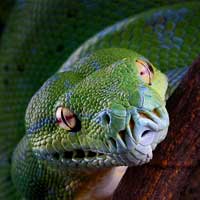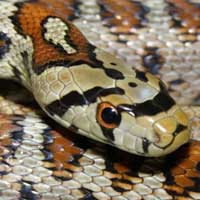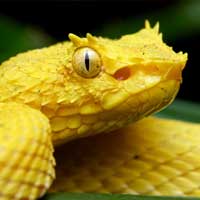The Ultimate Guide to Caring for the Rough-Scaled Sand Boa
The Rough-Scaled Sand Boa, scientifically known as Eryx conicus, belongs to the Boidae family, which includes a variety of non-venomous, constricting snake species known for their adaptability, burrowing behavior, and widespread presence in arid and semi-arid regions.
Scientific Name: Eryx conicus
Snake Family: Boidae

Introduction to the Rough-Scaled Sand Boa
The Rough-Scaled Sand Boa (*Eryx conicus*) is a fascinating, non-venomous snake native to South Asia. Renowned for its rough, keeled scales and burrowing behavior, this small, docile boa is a favorite among reptile enthusiasts. Its manageable size and calm temperament make it an excellent choice for beginner and experienced snake keepers alike.
Creating the Perfect Habitat for the Rough-Scaled Sand Boa
To ensure your Rough-Scaled Sand Boa thrives, replicating its natural arid and semi-arid environment is crucial. Key habitat requirements include:
- Enclosure Size: A 10-20 gallon tank is sufficient for adults, with a secure lid to prevent escape.
- Temperature Gradient: Maintain daytime temperatures of 85-90°F with a basking spot around 95°F, and nighttime temperatures of 70-75°F.
- Humidity: Keep humidity levels between 30-50%, achieved with minimal misting and proper ventilation.
- Substrate: Use sand, coconut fiber, or a sand-soil mix to support burrowing behavior.
- Hides and Enrichment: Provide multiple hiding spots, rocks, and logs to encourage natural behaviors.
Below is a habitat setup guide:
| Habitat Element | Specifications |
|---|---|
| Enclosure Size | 10-20 gallons |
| Temperature | 85-90°F (day), 70-75°F (night) |
| Humidity | 30-50% |
| Substrate | Sand, coconut fiber, sand-soil mix |
Feeding Your Rough-Scaled Sand Boa: Diet and Tips
The Rough-Scaled Sand Boa is a carnivorous species with simple dietary needs. Feeding recommendations include:
- Juveniles: Feed pinky mice every 5-7 days.
- Adults: Provide appropriately sized rodents, such as fuzzy or hopper mice, every 7-10 days.
- Prey Type: Use pre-killed prey to prevent injury to your snake.
- Feeding Behavior: These boas prefer ambushing prey, so place the food near their hiding spot.
- Water: Always provide fresh, clean water in a shallow dish.
A consistent feeding schedule supports healthy growth and vitality.
Behavior and Temperament of the Rough-Scaled Sand Boa
The Rough-Scaled Sand Boa is known for its calm demeanor and unique burrowing habits. Key behavioral traits include:
- Burrowing Nature: These snakes spend much of their time hidden beneath the substrate.
- Ambush Predators: They prefer to ambush prey rather than actively hunt.
- Docile Temperament: They are generally tolerant of handling and rarely exhibit defensive behavior.
- Stress Indicators: Prolonged hiding, lack of appetite, or increased defensiveness may indicate stress or poor habitat conditions.
Understanding their natural behavior ensures proper care and interaction.
Health and Lifespan of the Rough-Scaled Sand Boa
With proper care, the Rough-Scaled Sand Boa can live 15-20 years in captivity. Key health considerations include:
- Common Health Issues: Look out for respiratory infections, mites, and improper shedding.
- Preventative Measures: Maintain optimal temperature, humidity, and cleanliness in their enclosure.
- Veterinary Care: Schedule regular check-ups with an exotic animal veterinarian.
- Observation: Monitor for signs of illness such as wheezing, lethargy, or changes in appetite.
Consistent care and attention to their environment ensure a long and healthy life.
Reproduction and Breeding of the Rough-Scaled Sand Boa
Breeding Rough-Scaled Sand Boas in captivity requires knowledge of their reproductive cycle. Key aspects include:
- Breeding Season: Typically occurs during the spring after a winter cooling period.
- Mating Behavior: Males may become more active while searching for females.
- Gestation: Females are ovoviviparous, meaning they give birth to live young after a gestation period of 4-5 months.
- Litter Size: Typically ranges from 4-12 offspring.
Proper preparation and monitoring are essential for successful breeding.
Tips for Handling and Caring for the Rough-Scaled Sand Boa
Proper handling and care ensure a stress-free and healthy life for your snake. Tips include:
- Handle your snake gently and support its entire body to avoid stress.
- Avoid handling immediately after feeding to prevent regurgitation.
- Provide a clean and enriched enclosure with plenty of hiding spots and burrowing substrate.
- Monitor their behavior and physical condition regularly for signs of stress or illness.
- Establish a consistent feeding and cleaning routine to maintain a healthy environment.
Building trust through proper handling will create a rewarding experience for both you and your pet.

